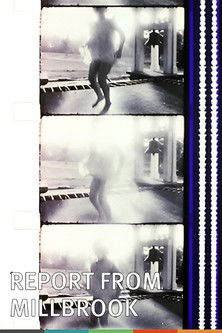Report from Millbrook
Genres
Documentary
OverView
Jonas Mekas documents Timothy Leary’s Millbrook estate in the wake of a police raid, juxtaposing serene images of the property with audio of officials justifying their actions. Blending diary footage with subversive reportage, the film exposes the gap between perception and authority, offering an oblique portrait of the counterculture and its suppression.
Others
Budget
$--
Revenue
$--
Status
Released
Original Language
English
Runtime
11 mins
Rating
5.8/10
Release Date
06 September 1966
Country
United States of America
